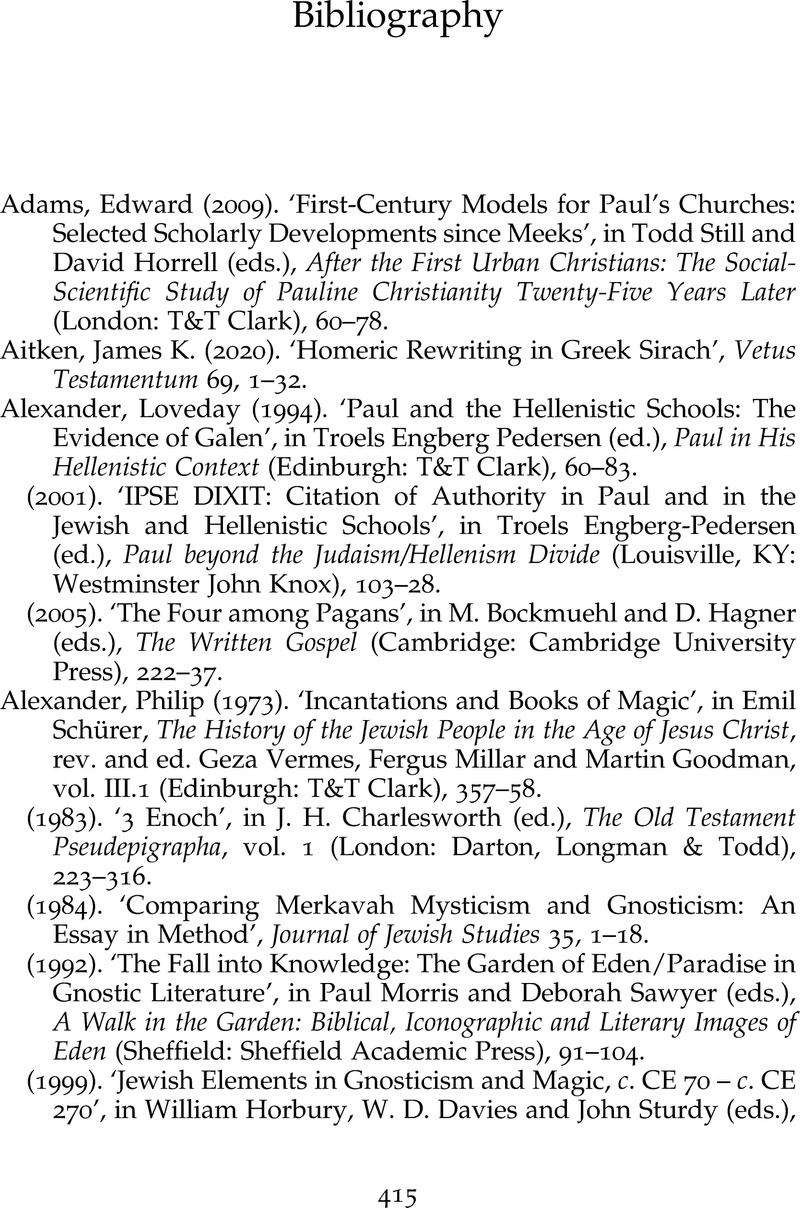Book contents
- Celsus in his World
- Celsus in his World
- Copyright page
- Contents
- Contributors
- Preface
- Introduction
- 1 Of Scholarship, Piety and Community
- 2 Annotations on the Literary Structure of Celsus’ Alēthēs Logos
- 3 Celsus As Platonist Philosopher
- 4 Celsus’ Theology
- 5 Origen’s Celsus and Imperial Greek Religiosity
- 6 Celsus, or Philosophy and the Second Sophistic
- 7 Homer in Origen, Against Celsus
- 8 The Gospel according to Celsus
- 9 The Reception of the Alēthēs Logos
- 10 Celsus’ Judaism
- 11 The Multiple Personalities of Celsus’ Jew
- 12 Afterword
- Bibliography
- Author Index
- Subject Index
- References
Bibliography
Published online by Cambridge University Press: 18 November 2021
- Celsus in his World
- Celsus in his World
- Copyright page
- Contents
- Contributors
- Preface
- Introduction
- 1 Of Scholarship, Piety and Community
- 2 Annotations on the Literary Structure of Celsus’ Alēthēs Logos
- 3 Celsus As Platonist Philosopher
- 4 Celsus’ Theology
- 5 Origen’s Celsus and Imperial Greek Religiosity
- 6 Celsus, or Philosophy and the Second Sophistic
- 7 Homer in Origen, Against Celsus
- 8 The Gospel according to Celsus
- 9 The Reception of the Alēthēs Logos
- 10 Celsus’ Judaism
- 11 The Multiple Personalities of Celsus’ Jew
- 12 Afterword
- Bibliography
- Author Index
- Subject Index
- References
Summary

- Type
- Chapter
- Information
- Celsus in his WorldPhilosophy, Polemic and Religion in the Second Century, pp. 415 - 439Publisher: Cambridge University PressPrint publication year: 2021



